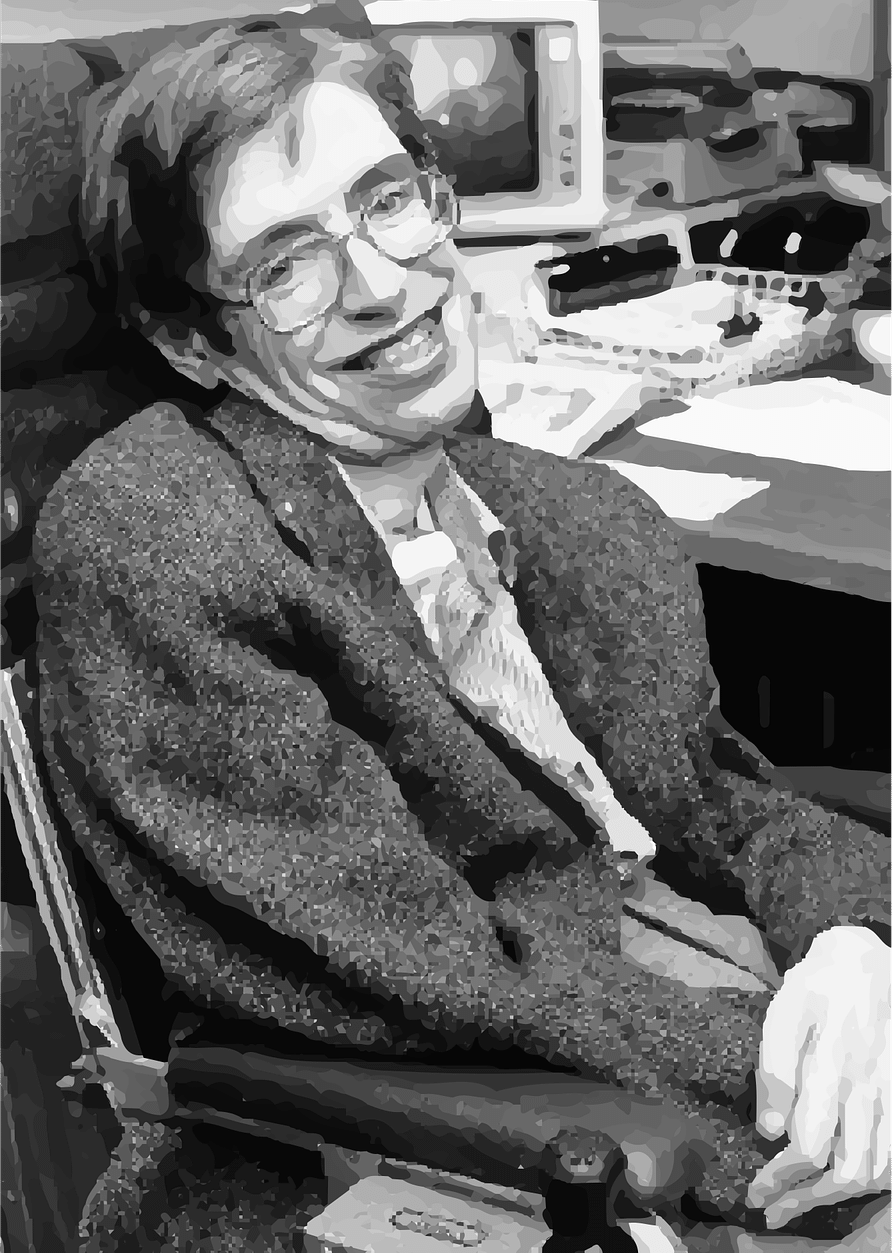
The holographic principle postulates that space-time is a consequence of a phenomenon known as quantum entanglement.
Holographic principle is the name given to an idea, theory or interpretation that was promoted in the '90s by two specialists in theoretical physics : the American Leonard Susskind and the Dutch Gerardus 't Hooft . Stephen Hawking , accompanied by Thomas Hertog , also worked for two decades on a cosmological theory that indicates that the universe, after the Big Bang , was constituted as a hologram of enormous complexity.
In recent seasons, scientists of Italian origin focused on the holographic principle to advance the analysis of black holes . According to their research, it is possible to work with these bodies as if they were a hologram (that is, an image that is achieved thanks to the holography technique) from a three-dimensional perspective although their essence is two-dimensional. According to his criteria, the aforementioned black holes can be represented taking into account the basis of the holographic principle , which indicates that, in a certain area of space, the behavior of gravity (by substantially disappearing) can be reflected with a system that presents one less dimension. It is not ruled out that, in the medium term, with more advanced space telescopes and cutting-edge technology, this brand new approach can be applied to quantum gravity .
In the opinion of physics expert Roberto Amparan , although demonstrations and tests remain, it should not be ruled out that the hypothesis of the holographic principle is true. In this regard, in statements to the press this expert explained that for years this principle has emerged, and survives, in a context related to a quantum theory of gravity that brings together quantum physics with gravity and that, in turn, It is linked to string theory and superstring theory.
More views on the holographic principle
There are several scientists of different nationalities who, at different times, have taken the holographic principle into consideration. For this reason, after having alluded to the contributions of several researchers, it is worth sharing more views on the holographic principle .
It is necessary, in this framework, to exalt the figure of the Argentine Juan Maldacena , the theoretical physicist behind the analysis and development of the AdS/CFT duality , also known as the Maldacena conjecture or AdS/CFT correspondence . In it, which points to the connection between Anti-de Sitter space-time (AdS) and conformal field theory (CFT) , the holographic principle gains relevance.
Using computers in order to verify part of the statements or positions of this conjecture, a group of Japanese scientists has carried out a mathematical calculation: now there are more predictions that lead to the demonstration that gives certainty regarding the hologram character that it could have. our universe.
Likewise, it is fair to stop at the studies carried out by Stephen Hawking and Jacob David Bekenstein . Thanks to them it is possible to learn about the Bekenstein limit or border (a limit that is linked to the holographic principle and the thermodynamics of black holes ). This boundary serves to demarcate the level of information capable of being stored inside a spherical volume at the entropy of a given black hole that has the same surface. This is how the so-called Bekenstein-Hawking entropy comes into play (whose equation for black holes with a three-dimensional profile, covering the event horizon among other variables, ends up saturating the Bekenstein limit ), which indicates how much entropy is assigned to a certain hole. black in order to enforce the laws of thermodynamics .

The scientist Stephen Hawking did research on black holes and postulated, as indicated by the holographic principle, that the universe could have been constituted as a highly complex hologram.
Applications and scope
The holographic principle , which has been capturing the interest and attention of scientists from theory for decades, has managed to add applications and scope over time.
A few years ago, specialists at the Technical University of Vienna suggested that this principle can be sustained and adapted to a flat space-time like our universe, which, in terms of astronomical distances, has a positive curvature.
In the field of Physics , the holographic principle constitutes a mathematically based tool born from a series of conjectures to suggest that the universe can be considered as a hologram . With this vision, the Big Bang and black holes have been analyzed, for example.

According to a theory promoted by S. Hawking, since the Big Bang the universe could have developed as a projection of holographic essence.
Experts in astronomical and cosmological issues say that it is essential to have a categorical combination of the theory of general relativity (useful for describing the universe but on a large scale) and quantum mechanics . One way to combine them is, as has been publicly stated, to try to assume the holographic character of gravity . By taking advantage of the knowledge that emerges from string theory, we are closer to reconstructing the process of constitution of matter and energy. Although much progress has been made in terms of scientific findings that contribute to answering numerous questions, there is still much to investigate and test in order to, for example, confirm whether or not the postulate of the holographic principle is fulfilled.
